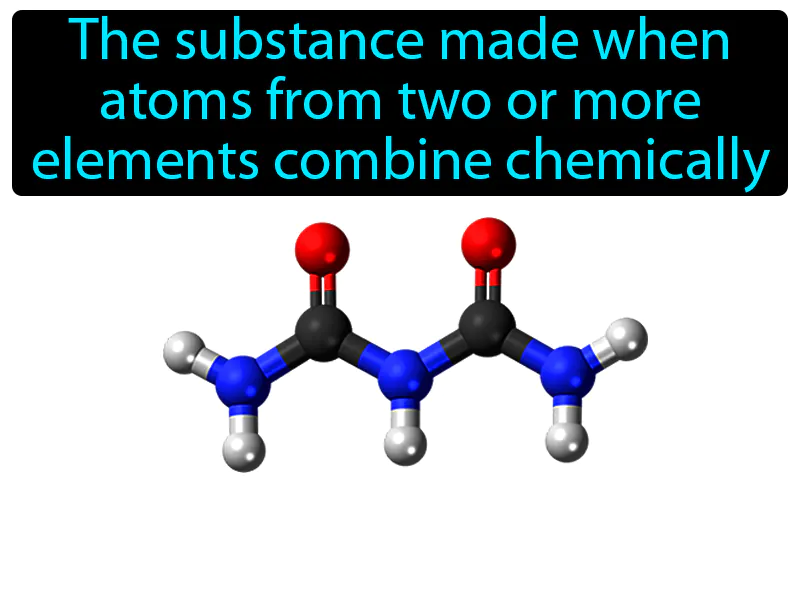In the realm of chemistry, compounds are akin to intricate tapestries, woven from the threads of different elements. Each thread contributes its distinct hue and texture, resulting in a beautiful and harmonious whole. This analogy serves as a poignant prelude to understanding compounds, which are entities composed of two or more different atoms that are chemically bonded together. In this exploration, we shall delve into the myriad nuances of compounds, elucidating their classifications, properties, and significance within the scientific landscape.
At the heart of chemistry lies the definition of a compound: a substance formed when two or more elements combine in fixed proportions through chemical bonds. These bonds, primarily ionic or covalent, serve as the invisible threads linking atoms, enabling them to function as a single, cohesive unit. A quintessential example is water (H2O), where two hydrogen atoms bond with one oxygen atom, resulting in a compound that exhibits properties distinct from its constituent elements—hydrogen, a flammable gas, and oxygen, a vital supporter of combustion.
Compounds can be categorized into two primary classes: organic and inorganic. Organic compounds, often described as the carbon-based compounds, feature carbon atoms covalently bonded to other elements, predominantly hydrogen, oxygen, nitrogen, and sometimes sulfur or phosphorus. The range of organic compounds is extensive, encompassing simple molecules such as methane (CH4) to complex macromolecules like proteins and nucleic acids. These compounds form the foundational building blocks of life, underscoring the assertion that carbon is the element of life.
In contrast, inorganic compounds encompass a wide array of substances that typically do not contain carbon-hydrogen bonds. This category includes salts, minerals, and metals, marking a distinct departure from the organic realm. The importance of inorganic compounds is palpable; they play pivotal roles in geological processes, industrial applications, and biological systems. For instance, sodium chloride (NaCl), an ionic compound, is critical for maintaining physiological homeostasis and is ubiquitous in both nature and human consumption.
The properties of compounds are profoundly influenced by the nature of the chemical bonds that connect their constituent atoms. Ionic compounds, characterized by the transfer of electrons from one atom to another, often exhibit high melting and boiling points, alongside their ability to dissolve in water and conduct electricity when molten or dissolved. Conversely, covalent compounds, which involve the sharing of electrons, may display lower melting and boiling points, with many existing as gases or liquids at room temperature, such as ethanol (C2H5OH).
To further illustrate the allure of compounds, consider their role in the creation of the diverse materials that constitute our modern world. From the polymers that form plastics to the delicate balance of neurotransmitters in the brain, compounds underpin both the tangible and intangible facets of our existence. For example, the compound glucose (C6H12O6) serves as a primary energy source for living organisms, highlighting the intricate dance of chemistry that fuels life.
The synergy of atoms within compounds extends beyond mere existence; it manifests in the concept of molecular geometry. The three-dimensional arrangement of atoms within a compound dictates its reactivity, polarity, phase of matter, color, magnetism, and biological activity. The tetrahedral shape of methane is a prime example of how molecular geometry influences properties. This spatial orientation has profound implications in fields ranging from pharmaceuticals to materials science, where the efficacy of a compound can hinge on the meticulous alignment of its atoms.
As we traverse deeper into the world of compounds, it becomes evident that their synthesis—whether through natural processes or artificial means—exhibits a profound complexity. Natural synthesis, as observed in geological formations or biological pathways, presents a harmonious interplay of elements facilitated by environmental factors. Conversely, synthetic chemistry endeavors to mimic these natural processes, seeking to design new compounds with tailored properties for specific applications. The synthesis of Aspirin, for instance, demonstrates the ingenuity of chemists in creating a compound with significant therapeutic effects.
The versatility of compounds is not to be underestimated. They provide the foundation for innumerable applications across diverse sectors. In agriculture, compounds such as fertilizers enhance plant growth by providing essential nutrients. In medicine, compounds have led to the development of vaccines, antibiotics, and other pharmaceuticals. In industrial contexts, materials science relies on compounds to innovate, producing everything from superconductors to nanomaterials that hold promise for future technologies.
Despite their fascinating attributes, compounds can also pose challenges. Toxic compounds, characterized by their detrimental effects on health and the environment, necessitate stringent regulations and awareness. The infamous compounds such as chlorofluorocarbons (CFCs) have had dramatic consequences for the ozone layer, serving as a potent reminder of the delicate balance between human endeavor and ecological preservation.
In conclusion, compounds are much more than mere entities characterized by their constituent atoms; they represent the very essence of chemistry—a profound interconnection of elements that gives rise to the properties, behaviors, and marvels of the material world. As holistic agents that underpin various scientific disciplines, the study of compounds continues to unravel the complexities of nature, enriching our understanding and hailing the symphony of atoms that bridges the microcosm of individual elements to the macrocosm of our universe.












